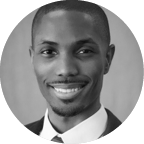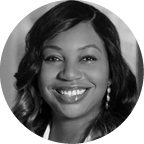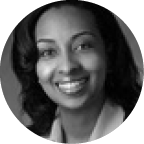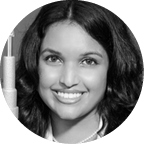Ophthalmologists share their experiences navigating unequal treatment in medicine based on gender, race, and ethnicity, and they discuss both the hurdles to increasing equity in ophthalmology and the steps that individuals and institutions can take to minimize them.

AARON D. DOTSON, MD
There are so many things to love about ophthalmology: the combination of medicine and outpatient surgery, the ability to analyze pathology directly, and the opportunity to fix most ophthalmic problems fairly quickly, to name a few. As ophthalmology continues to grow as a field of innovation, it also continues to fall short on racial diversity. With regard to recent and current social climates, we must ask the question, “Who’s being invited to have a seat at the table?”
Among medical specialties, ophthalmology has one of the lowest representations of racial minority groups, particularly African Americans. Only about 2.5% of practicing ophthalmologists in the United States identify as Black/African American, while the US population of Black individuals is about 13%.1,2 According to the 2019 San Francisco Match for Ophthalmology Residency, only 3% of the individuals who successfully matched identified as Black/African American.3
Many factors contribute to these statistics. There is relatively limited exposure to ophthalmology in medical school, competition for ophthalmology residency positions is high, and it may be harder for Black medical trainees to find relatable mentors compared to those in other minority groups.
Although this reality may appear jarring, efforts have been made to help fix the problem to better diversify the field. Pipeline programs, such as the Minority Ophthalmology Mentorship (MOM) program of the AAO and the Association of University Professors of Ophthalmology and the Rabb-Venable Excellence in Research Program of the National Medical Association (NMA), have made tremendous strides in recruiting underrepresented minority (URM) premedical and medical students to ophthalmology.
With an aging population and worsening health-care disparities affecting patients of color, it is imperative that we continue to evaluate ways to further diversify ophthalmology. The MOM and Rabb-Venable programs have done wonderful jobs with the recruitment of URM applicants, but additional efforts from residency programs are needed. Residency programs should undertake holistic application reviews, build stronger relationships with their Student National Medical Association (SNMA) and Latino Medical Student Association home chapters, and create welcoming environments to allow better recruitment, retention, and success of minority individuals interested in ophthalmology.
The effort to diversify ophthalmology must involve everyone within the field. A more inclusive specialty will help reduce health disparities, increase the relative level of trust from patients toward their providers, and ultimately help to increase the preservation of our patients’ sight. There’s still more work to be done, but the foundation has been laid. It’s up to us to determine not only who’s invited to have a seat at the table but also how we can make our table of ophthalmology more inclusive for all those who join it.
1. Xierali IM, Nivet MA, Wilson MR. Current and future status of diversity in ophthalmologist workforce. JAMA Ophthalmol. 2016;134(9):1016-1023. https://doi.org/10.1001/jamaophthalmol.2016.2257
2. Population estimates, July 1, 2019. United States Census Bureau website. https://www.census.gov/quickfacts/fact/table/waynecountymichigan/PST045219#. Accessed April 29, 2021.
3. Gender & Ethnicity Data, Ophthalmology Residency January 2019. Association of University Professors of Ophthalmology website. https://aupo.org/system/files/resources/2019-03/2019 AUPO Residency Gender-Ethnicity-Summary Final.pdf. Accessed April 29, 2021.

USIWOMA ABUGO, MD
I am in the unique position of being a Nigerian female surgeon. That means that I have equal opportunity on all fronts to be treated unequally. Frequently, I am asked the question, “How long have you been doing this?” I have noticed in my career that, even if a male physician is less experienced than I, he is never asked that question. I have had patients who have been perturbed about seeing me and have demanded to see a male surgeon instead. I have also had patients tell me that they are “surprised” that I am the one treating them. In these cases, they have been referring to my race and have made this clear with subsequent questions.
In each of these situations, I first mentally compose myself. Then I tell them that I am their provider and that I am qualified to do what I do, but if they would like to see a different provider then that is completely fine. The relationship between provider and patient must be one of trust. If that relationship cannot be established because of preconceived notions or prejudice, then it should come to a peaceful conclusion.
When I first started practicing, I had a chip on my shoulder and would have a visceral reaction to interactions like these and carry it with me for days. Now, I am pleased to say that I have had many other positive interactions with patients who are proud to see me as an African, Black, female surgeon. Many have said, “I will tell my daughter that my doctor looks like her.” Others have commented, “When I was younger, someone who looked like me would not be a doctor; seeing you brings tears to my eyes.” I am at the stage that the negative comments, questions, and surprised looks serve not as a deterrent to my career but as a reminder that I am blessed by God to do what I do. How many people can say that their very presence breaks barriers and walls every single day?
Among the greatest hurdles to increasing diversity, equity, and inclusion in ophthalmology are education and opportunity. I think that ophthalmologists can do much more to recruit minority students and make them feel welcome. For example, one summer I served as the NMA’s ophthalmology section ambassador at the SNMA’s annual convention. My job was to recruit minority students. Following up with students who signed up at this convention was key. It showed them that they were wanted. Surprisingly, many minority students don’t even consider ophthalmology unless they already know someone in the field. It would be powerful if other nonminority-focused organizations actively recruited at events such as this.
Beyond recruitment, we must create opportunity for minorities in medicine, especially for medical students or trainees in the early stages of questioning which path to take. Opportunities such as shadowing, participating in research, and contributing to publications do not come easily to any student, but this is especially true for the minority student.
In my role as a mentor, I am frequently asked about finding opportunities. The advice I give is to find the person on the faculty who looks like you and ask for those opportunities. My hope is that one day minority students will be offered opportunities by a wider range of individuals, not only those who look like them.

NANDINI VENKATESWARAN, MD
Ophthalmology is one of the most cutting-edge and innovative medical specialties, and individuals and institutions can offer many plans of action to increase diversity, equity, and inclusion in our wonderful field. One of the paramount hurdles to increasing diversity and inclusion is a lack of conversation on these topics. Having open dialogues about inequities and underrepresentation in ophthalmology is critical to addressing the problem at hand. Through honest, raw conversations in the form of webinars, panels, and even day-to-day discussions, we each can become more cognizant of these issues and better educate ourselves regarding where they stem from. We must also become more aware of our implicit biases, strive to hear alternative perspectives, and avoid turning a blind eye or becoming a bystander to inequities.
At the institutional level, committees focused on diversity and inclusion can be powerful in achieving more equal gender and ethnic representation on academic faculties. Mentorship programs and scholarships can help to connect with, inspire, and assist students from underrepresented backgrounds in applying for and successfully matching into residencies in ophthalmology. Young students want to find mentors with whom they can identify, and pairing such students with mentors from similar backgrounds can help form strong, productive bonds.
It is also important for us to be allies when we witness individuals experiencing a lack of inclusion. We should encourage and mentor female trainees to pursue subspecialty training, especially in primarily male-dominated subspecialties, and provide them with the support and advice they may need to do so. For example, one can sponsor female or underrepresented colleagues for opportunities to speak on panels at meetings so that they can contribute their meaningful perspectives to a discussion, or consider nominating these individuals for national awards or competitive research opportunities. It is crucial that we work to break the cycle and play an active role in achieving parity on panels and speakers bureaus and in academic institutions’ hiring and promotions. Many times, it takes just one voice to bring light to these inequities, and that one voice can start a dialogue that can spur change.
Ultimately, through conversation and mentorship, inequities in ophthalmology can be reduced, biases can be shed, and doors can be opened for newfound opportunities, equitable treatment, and collaboration for all the diverse faces that comprise our field.

FASIKA WORETA, MD, MPH
Growing up in the suburbs of Columbia, Maryland, there was a lack of diversity in the schools I attended, from elementary through high school. As a child, I remember a parent of one of my elementary school friends telling her daughter that she was not allowed alone me with because I was Black. My siblings and I were frequently the only black children in our classrooms.
Fortunately, I went on to the University of Maryland, College Park, for my undergraduate training, which offered an incredibly diverse environment that included students of all races from all over the world. For the first time, I felt comfortable in my skin and began to flourish on both personal and professional levels. Again, when I went to Johns Hopkins University for medical school, I was delighted to find another diverse environment, both with regard to the patients we served and the workforce that surrounded me.
After finishing medical school and starting a family, we returned to living in the suburbs of Columbia, which over the years had become much more diverse. Because I tend to be an optimistic person, I am certain that I have overlooked microaggressions and biases that I am subject to merely because I am Black and female. In recent years, it has become evident that we all have implicit and unconscious biases, and in my roles as residency program director, clinician, and clinical researcher, I strive to do my best to recognize and mitigate these.
In my opinion, there are many hurdles to diversity, equity, and inclusion in ophthalmology, none of which are insurmountable. One major barrier has been the reliance on standardized test scores for entry into medicine and ophthalmology, with a corresponding lack of holistic screening by selection committees. Fortunately, times are changing. This is reflected in the changing of the US Medical Licensing Examination (USMLE) Step 1 to pass/fail grading, which will prevent programs from using cutoffs to screen out applicants from the start.
Many practicing Black ophthalmologists have stories of being discouraged from applying to ophthalmology programs in their earlier years. Other factors that create hurdles for minority individuals include a lack of exposure to ophthalmology and a lack access to mentors. Of the four historically black colleges and universities (HBCUs) with medical schools, only Howard University has an ophthalmology program. We all need to pay attention to medical students at HBCUs in order to improve their exposure to opportunities in ophthalmology and provide the mentorship they need for successful matching.
Two examples of very successful programs to increase diversity within our field are the Rabb-Venable Excellence in Ophthalmology Program, organized by the ophthalmology section of the NMA, and the MOM Program, created by the AAO and the Association of University Professors of Ophthalmology. These programs have produced remarkable results and can serve as models for other fields of medicine.

LUXME HARIHARAN, MD, MPH
As I began thinking about how to respond for this article about a time when I felt I was treated unequally in ophthalmology based on my gender, race, or ethnicity, I was sharing a meal with two friends who are African American ophthalmology colleagues. I requested their opinions, and they said to me, “Lux, that is the wrong question. There are not just a few instances when we experienced this in our careers but rather a few instances when we did not.” They both told me that, throughout their medical careers and training, they have experienced systemic racism and prejudice based on their gender and skin color daily.
As a South Indian Tamilian American woman, I agree that those of us who are underrepresented in medicine experience such incidents consistently throughout our lives. While Asians and South Asians are traditionally better represented in ophthalmology and medicine in general, as a young female ophthalmologist, I often find myself jumping over hurdles that my other colleagues can easily bypass. However, I believe we should spend more time and energy looking for solutions to, and triumphs in, increasing diversity rather than the barriers that prevent it.
Achieving diversity, inclusion, and equity in our field means more than just increasing the number of minority individuals at the proverbial table. It also means having a diversity of disciplines, ideas, and backgrounds represented among the decision-makers and leaders. After all, truly changing the conversation requires changing who is seated at the decision making table.
For example, I was recently asked by my hospital’s leadership to serve as the only physician on the Nicklaus Children’s Hospital Foundation Board of Directors. Diversifying a board that has the power to raise funds for the hospital is a clear example of inclusion. We must look at the decision-makers and leaders within our institutions, and we must advocate for change if our identified group is not included or represented. By serving on our foundation’s board, I have an opportunity to work with people from different professions, races, ages, genders, and backgrounds to help make a difference for our children’s hospital in Miami and beyond.
In my work in global ophthalmology and policy, I have found that solving problems related to blindness prevention requires breaking out of our silos and sharing ideas across disciplines. Multifaceted problems require multifaceted solutions. Blindness prevention cannot be achieved by ophthalmologists alone, without input from a diverse group of thought leaders including teachers, government officials, academics, and parents. When I was asked to work on the World Health Organization’s blindness prevention team, I was the only pediatric ophthalmologist from the United States invited to join. It was a very diverse team made up of colleagues from various disciplines, backgrounds, ages, and nations, and in my opinion, this is how we can achieve the best outcomes. Diverse perspectives help foster outside-the-box thinking and creative problem solving.
If the decision makers at your institution do not look like you or sound like you, or if they simply seem like they are all from similar backgrounds, then that is where I recommend advocating for targeted change. If you do not currently have a seat at the table, then create one. Allow yourself to take up space. We must advocate for ourselves, our profession, and our patients in an effort to create a more diverse, equitable, and inclusive space in ophthalmology and beyond. As Mahatma Gandhi once said, “We must be the change we wish to see in the world.”


